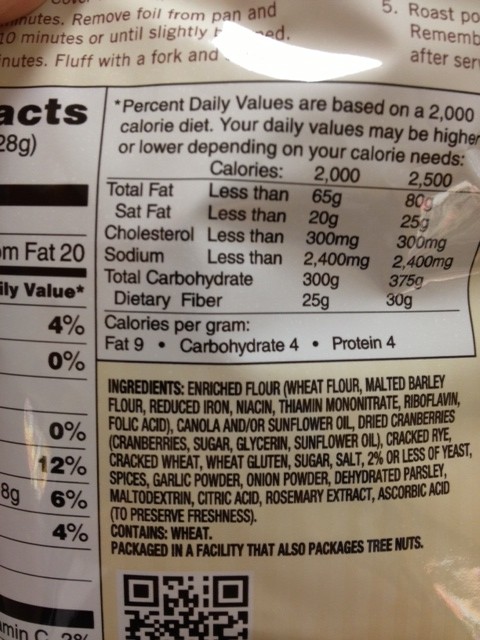 You are saying: I am reading labels. Now what? Right?
You are saying: I am reading labels. Now what? Right?
I know how you feel. I can watch out of the words I can’t pronounce, watch out for msg, high sugar and salt content, high cholesterol products, but there’s way more to the game. And every day I learn the details of something new and share.
Aren’t you glad you read this blog?
YES CHEF!
Glad to hear that. Anyway I was reading an article that quoted the FDA regulations. And sometimes when they say something is ‘a good source of’, I’m not quite sure what that means. If you take a moment to read what FDA puts out, (below) you will see if their labeling meets your standards.
Happy Eating,
These labels must meet specific FDA regulations in order to appear on a food product:
“High in” or “Excellent source of”: Must have 20 percent or more of the recommended daily value of the given nutrient per serving.
“Good source of” or “Contains”: Must have 10-to-19 percent of the recommended daily value of the given nutrient per serving.
“Fortified” or “Enriched”: Can only apply to vitamins, minerals, dietary fiber, and potassium. Must contain 10 percent or more of the recommended daily value than a comparable food.
“Antioxidant”: To qualify as an antioxidant, a food must have a recommended daily intake, scientific evidence of antioxidant properties, and enough of the nutrient per serving to qualify as a “good source of” the antioxidant.
“Healthy”: These foods must meet a long list of requirements including being low in fat, sodium, cholesterol, and contain at least 10 percent of the recommended daily value for important nutrients like vitamin C or calcium.
“No added sugars”: While a product may contain sugar, no sweeteners were added during processing.
“Light”: Food must be low-calorie, low-fat, and have sodium content reduced by 50 percent compared to similar products.
“Low-fat”: Food must have three grams or less of fat per serving.
“Low-calorie”: Food must have 40 calories or less per serving.


 Your membership helps feed those in need through No Face Goes Unfed, bringing hope to San Diego and then nationwide.
Your membership helps feed those in need through No Face Goes Unfed, bringing hope to San Diego and then nationwide.
